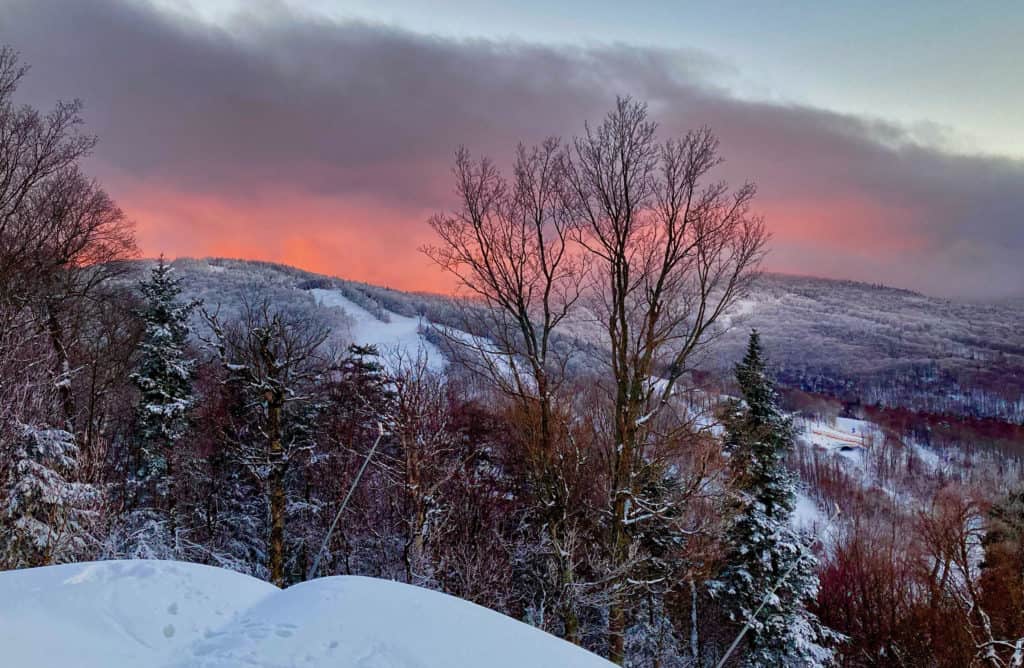
By Merisa Sherman
There is no time that simply awes like the first few days of winter settling into itself. Those snow covered days are plump and luscious, the beautiful fluffy world that we dream of when we say “powder day.” We imagine being wrapped in blankets, snuggled by the fire with a hot chocolate overflowing with marshmallows (or something stronger). Or the trees, bent over in magical archways, as the snow ladens their branches with its weight. Snow angels and snowmen litter front lawns and skiers are exhausted from squeezing every last inch out of the storm. Everything is quiet and peaceful, filled with the magic that only snow can bring.
But, in Vermont in December, that’s only the first half of the week. Both before and after that pure white snow comes, well, a little something different. The days where the trees stand stark naked, the leaves are just a bit crunchy and the snow (if there is any left) doesn’t move an inch. These damp and bitter days are combined with totally normal yet ridiculously slippery ice, almost as if a Zamboni has polished your driveway overnight. You hobble around, watching every step to make sure you don’t end up with your head on the ice, as you gingerly try to carry five bring-your-own-bags of groceries into the house.
The starkness of the change is usually drastic and your body makes the adjustment slowly. While fluffy snow made you feel warm, either from shoveling or skiing, the bitter cold permeates every inch of your body down to your core. Every injury, even those from decades past, reminds you of their existence as you reluctantly get out from under your thick winter covers. Your spine is so stiff that even bending over to pick up the sanding shovel seems an impossible task. The metal in your arm is vibrating from the cold so you play the safety bar like a drum set to keep it warm. Maybe you find yourself with an inexplicable kink in your neck for no reason other than the lack of snow.
It might even rain. The dirt roads become excitingly smushy, as mud keeps moving around like some kind of goo. It pulls and pushes your heavy automobile around like Kon-Tiki’s raft in the Pacific. The water logged roads become huge ruts of potential destruction. You fear the unbalanced tires that come with eight pounds of mud inside each wheel. The mud that can very easily pull you off the road and into that recently dug ditch. Is it always mud season?
And just when you think this bitterness couldn’t get any more bitter, the freeze comes. Cold, soft grass becomes cold, hard grass. The puddles in your driveway become laced with shards of ice and the main road … is now frozen in place. Say a prayer for your axles and your sway bar end links, because while we all worry and joke about mud season there is something worse. At least before, the ruts moved away and you could only get stuck. Hit a frozen rut or pothole at any kind of speed and good luck to you. I find myself repeatedly apologizing to my car in horror.
Up on the mountain, it can go one of two ways. It could be our bodies getting tossed about and slammed into frozen biscuits of the devil that refuse move. That brutal “foot massage” that everyone so lovingly suffers. Or it could be the complete opposite, where a simple chairlift ride takes you away from the bitterness of the valley and up into a winter wonderland. Snow rests on pine trees and your feet float along in the soft new snow. A world that makes you sing with joy and fills your heart with happiness.
But you’ll never know if you don’t go.




